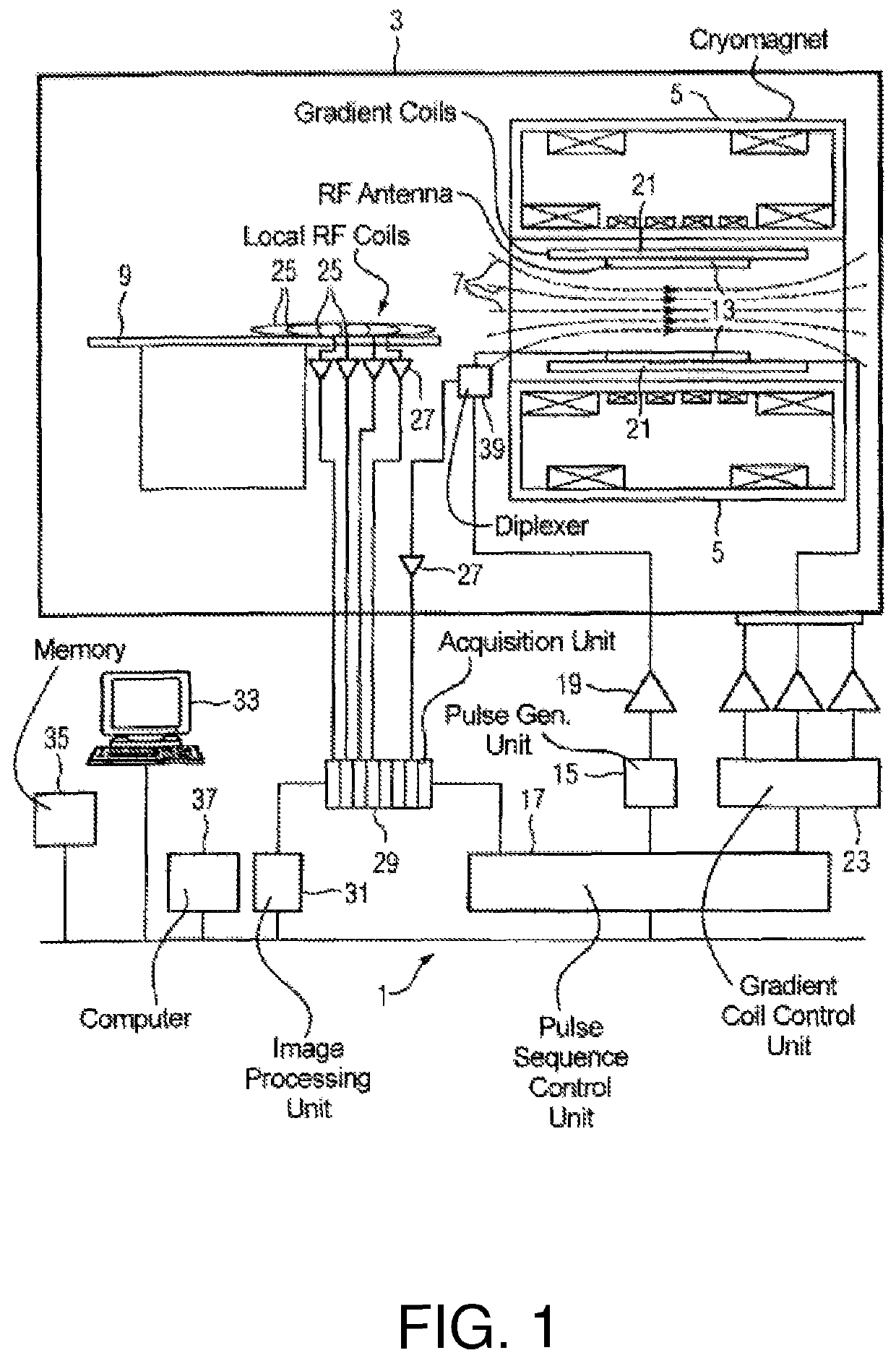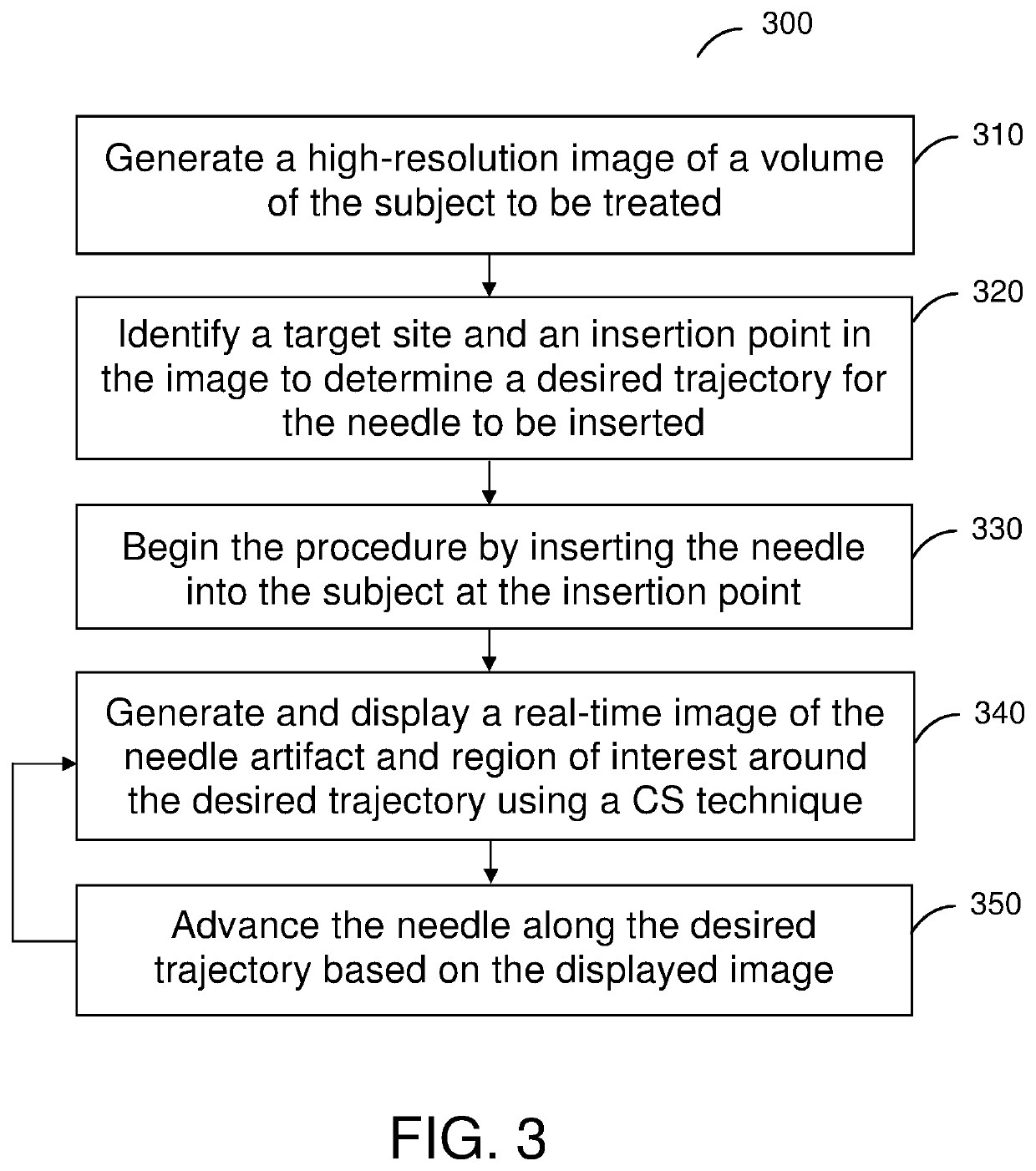System and method for real-time MRI-guided object navigation
a real-time mri-guided object and navigation system technology, applied in the field of real-time mri-guided object navigation system, can solve the problems of slowing down the overall procedure, slowing down the needle positioning procedure, and requiring a long repetition time tr, so as to facilitate the directional adjustment of the needle advancement
- Summary
- Abstract
- Description
- Claims
- Application Information
AI Technical Summary
Benefits of technology
Problems solved by technology
Method used
Image
Examples
Embodiment Construction
[0007]Exemplary embodiments of the present disclosure can provide magnetic resonance imaging systems and methods for real-time MRI of an object (such as a needle) while it is being inserted into biological tissue, using improved MRI techniques that can provide sufficiently high resolution images in real time to precisely guide the needle placement. The MRI techniques employ a compressed sensing approach that takes advantage of a pre-determined object path, known artifact effects associated with the object, the unchanging nature of images away from the object path, and the limited differences between successive images, where these factors are expressed as a cost function that can be minimized using the compressed sensing approach. The improvements in combined spatial and temporal resolution, as compared to conventional imaging techniques, facilitate an insertion procedure that can be continuously adjusted to accurately follow a predetermined trajectory in the tissue.
[0008]Certain emb...
PUM
 Login to View More
Login to View More Abstract
Description
Claims
Application Information
 Login to View More
Login to View More - R&D
- Intellectual Property
- Life Sciences
- Materials
- Tech Scout
- Unparalleled Data Quality
- Higher Quality Content
- 60% Fewer Hallucinations
Browse by: Latest US Patents, China's latest patents, Technical Efficacy Thesaurus, Application Domain, Technology Topic, Popular Technical Reports.
© 2025 PatSnap. All rights reserved.Legal|Privacy policy|Modern Slavery Act Transparency Statement|Sitemap|About US| Contact US: help@patsnap.com



